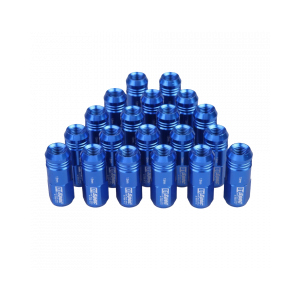Understanding the Importance of Oil Drain Pan Gaskets in Engine Maintenance and Performance
Understanding the Importance of Oil Drain Pan Gaskets
The oil drain pan gasket plays a crucial role in the overall functioning and longevity of an engine. This often overlooked component ensures that engine lubrication remains effective by preventing oil leaks. Understanding its structure, functions, and maintenance can help car owners appreciate the significance of this small but vital part.
What is an Oil Drain Pan Gasket?
The oil drain pan gasket is a seal that sits between the oil pan and the engine block. The oil pan is the reservoir that holds the engine oil, and it is usually located at the bottom of the engine. The gasket is typically made from materials such as rubber, silicone, or composite materials, which offer flexibility and resistance to high temperatures and harsh chemicals found in engine oil.
The Functions of the Oil Drain Pan Gasket
1. Oil Seal The primary function of the oil drain pan gasket is to create a tight seal between the oil pan and the engine block. This seal prevents engine oil from leaking out, which can lead to low oil levels and, consequently, engine damage. A good seal ensures that the lubrication system operates effectively.
2. Vibration Absorption Engines produce vibrations during operation. The gasket helps absorb these vibrations, preventing damage to the oil pan and surrounding components. This function is essential for maintaining the structural integrity of the engine system.
3. Temperature Regulation Engine oil plays a crucial role in managing the engine's temperature. By ensuring the oil remains contained within the pan, the gasket helps maintain optimal oil temperature, allowing for efficient lubrication and cooling of the engine components.
Signs of a Failing Oil Drain Pan Gasket
oil drain pan gasket

Over time, gaskets can wear out due to heat, pressure, and exposure to oil. Here are some common signs that an oil drain pan gasket may be failing
- Oil Leaks One of the most evident signs of a problem is the presence of oil leaks underneath the vehicle. If you notice oil stains on your driveway or garage floor, it is essential to investigate further.
- Low Oil Levels If you find yourself frequently adding oil to the engine, this could indicate a leak from the gasket. Low oil levels can lead to significant engine damage if not addressed promptly.
- Oil Pressure Warning Light A drop in oil pressure could be a sign that oil is leaking due to a failing gasket. If this warning light comes on, it's crucial to check for leaks immediately.
Maintenance and Replacement
To maintain the integrity of the oil drain pan gasket, regular inspections during oil changes are recommended. If any signs of wear or leaks are observed, replacing the gasket should be a priority to avoid more severe engine issues. Replacing the gasket typically involves draining the oil, removing the oil pan, cleaning the surfaces, and placing a new gasket before reassembling everything.
Conclusion
The oil drain pan gasket may be a small component of the engine, but its importance cannot be overstated. Maintaining a good condition of this gasket not only prevents costly oil leaks but also protects the engine from potential damage due to low oil levels and inadequate lubrication. As preventive measures go, paying attention to the health of your oil drain pan gasket is an easy and effective way to ensure the longevity and performance of your vehicle's engine. Regular checks and timely replacements can save car owners from significant expenses and the hassle of engine repairs, making it a worthwhile investment in vehicle maintenance.
-
Understanding Automotive Oil Seals: Essential Components for Engine and Shaft Protection
News Jul.30,2025
-
The Importance of Heavy Duty Seals in Industrial and Residential Applications
News Jul.30,2025
-
Exploring Industrial Oil Seals: From Felt Oil Seals to TTO and CFW Solutions
News Jul.30,2025
-
Essential Guide to Oil Seals: From Radial to Metal-Cased Seals for Industrial Reliability
News Jul.30,2025
-
Choosing the Right Oil Seals and Gaskets for Industrial and Automotive Applications
News Jul.30,2025
-
Cassette Seals: Durable Sealing Solutions for Harsh Environments
News Jul.30,2025
-
Understanding the Front Main Engine Seal: Purpose, Maintenance, and Installation
News Jul.29,2025
Products categories















